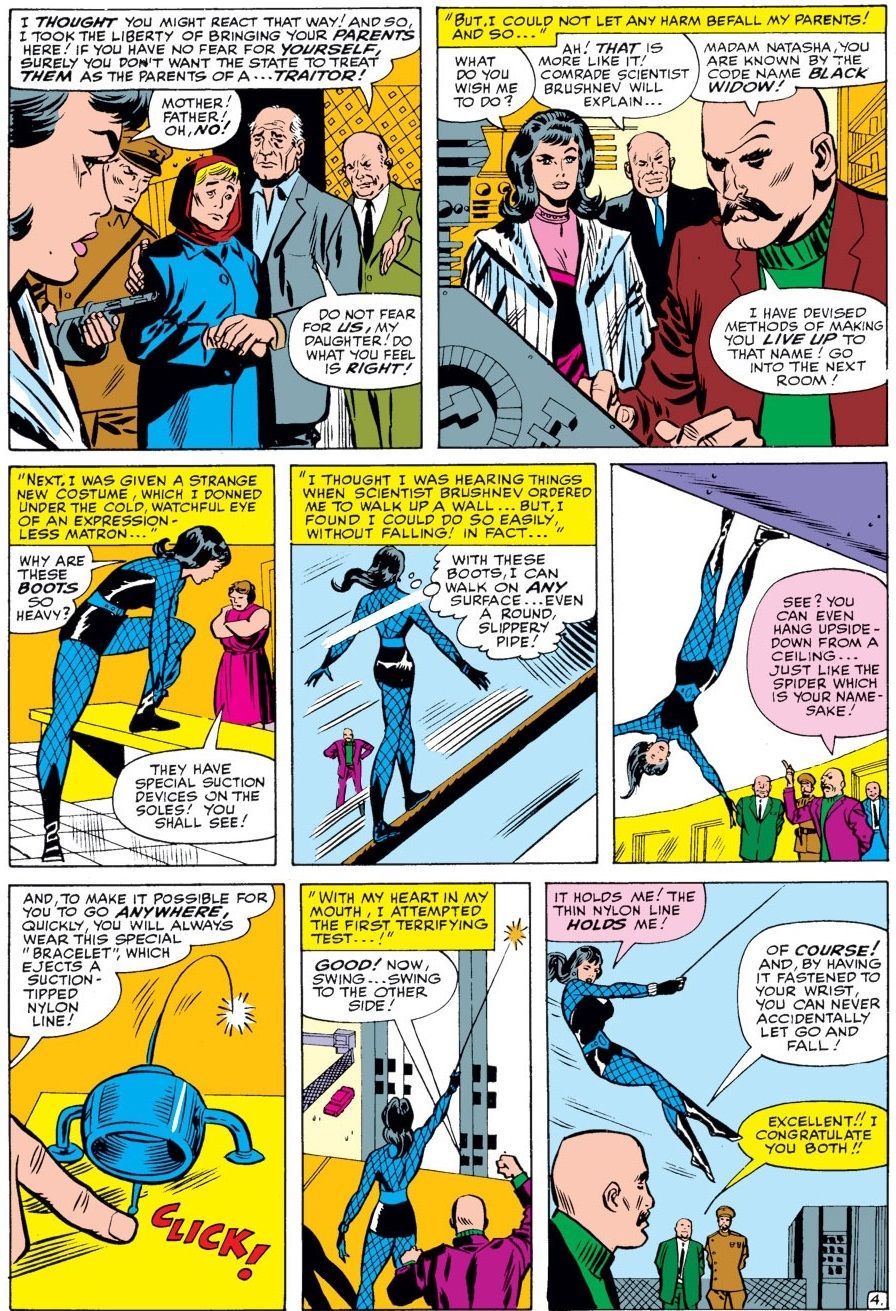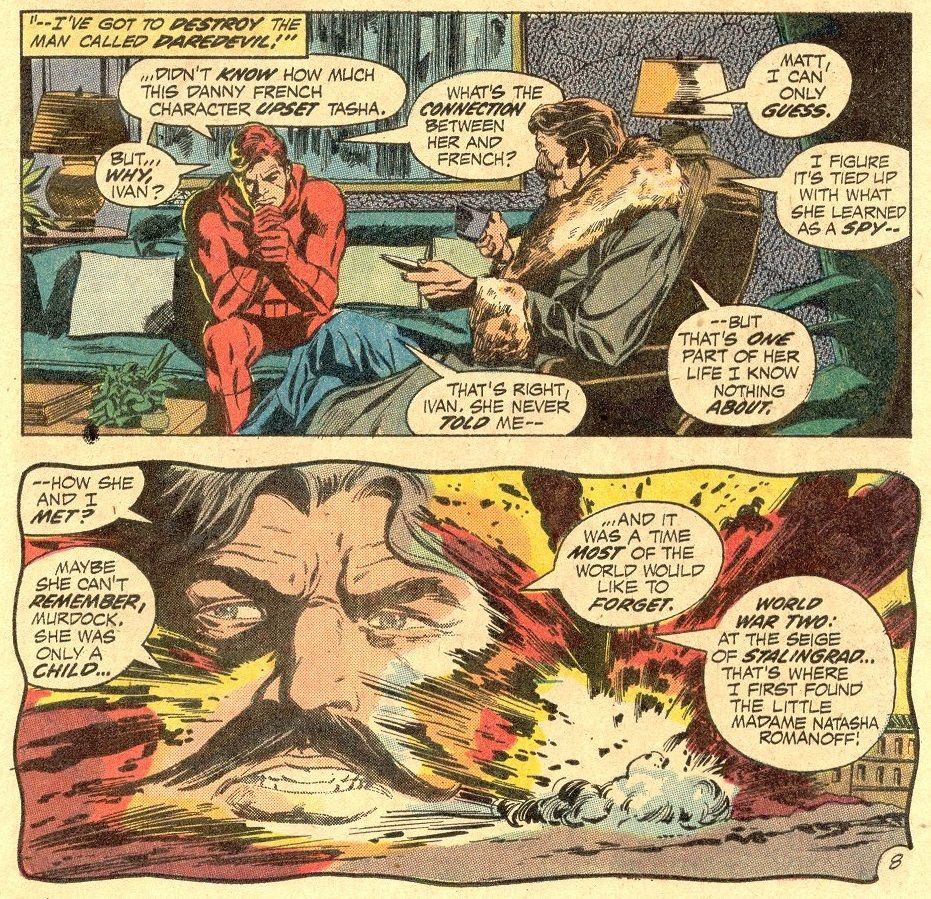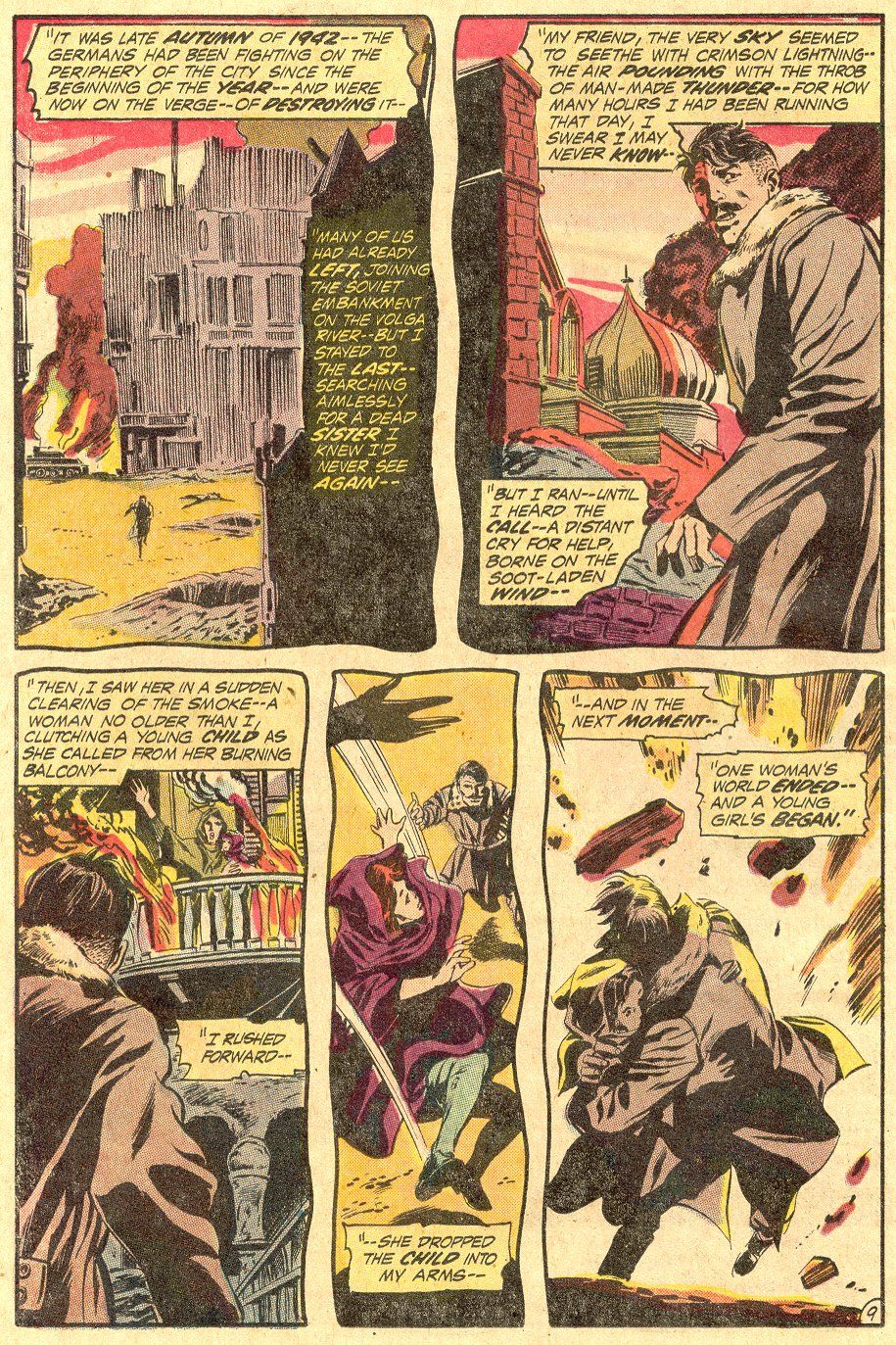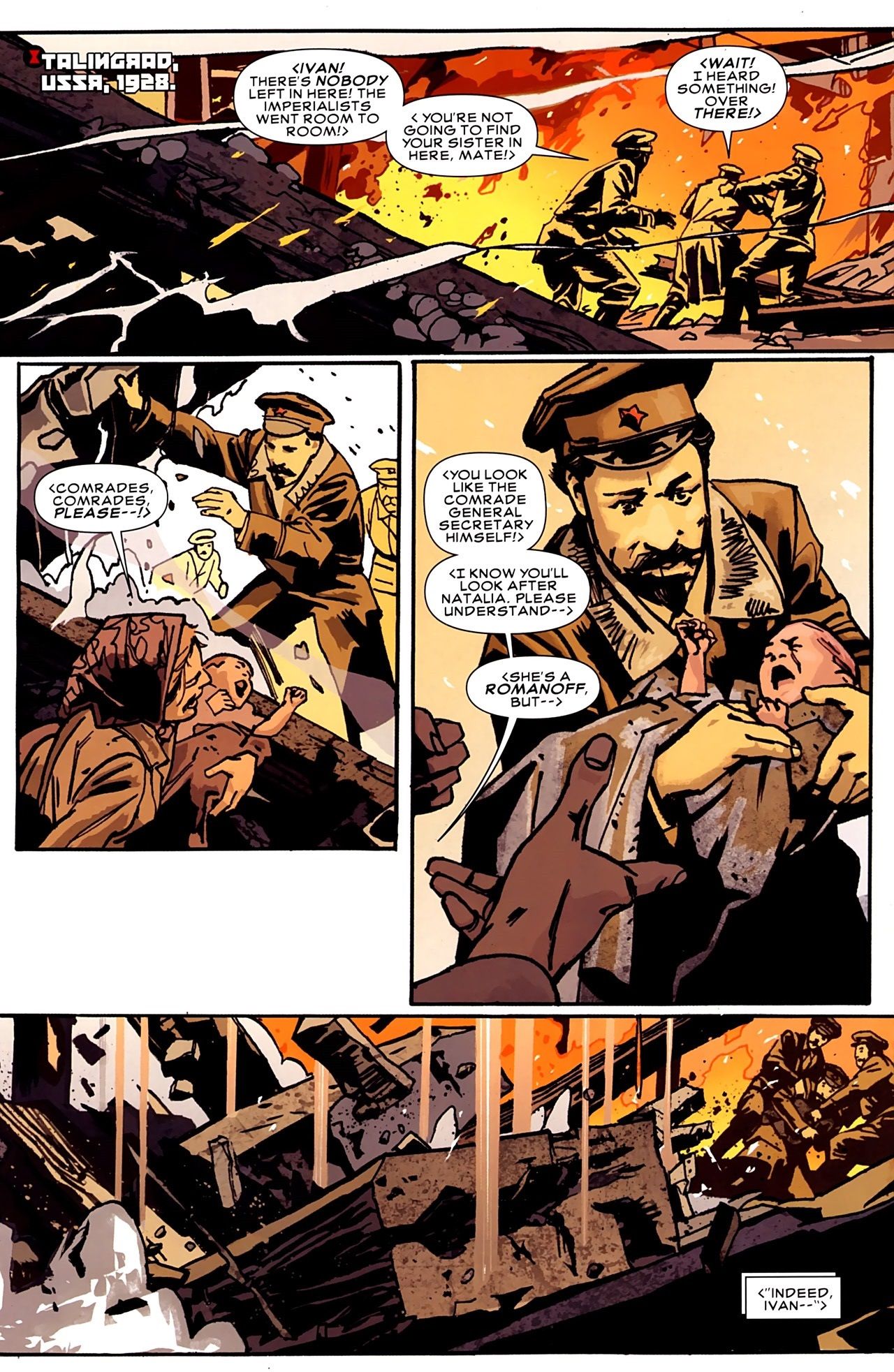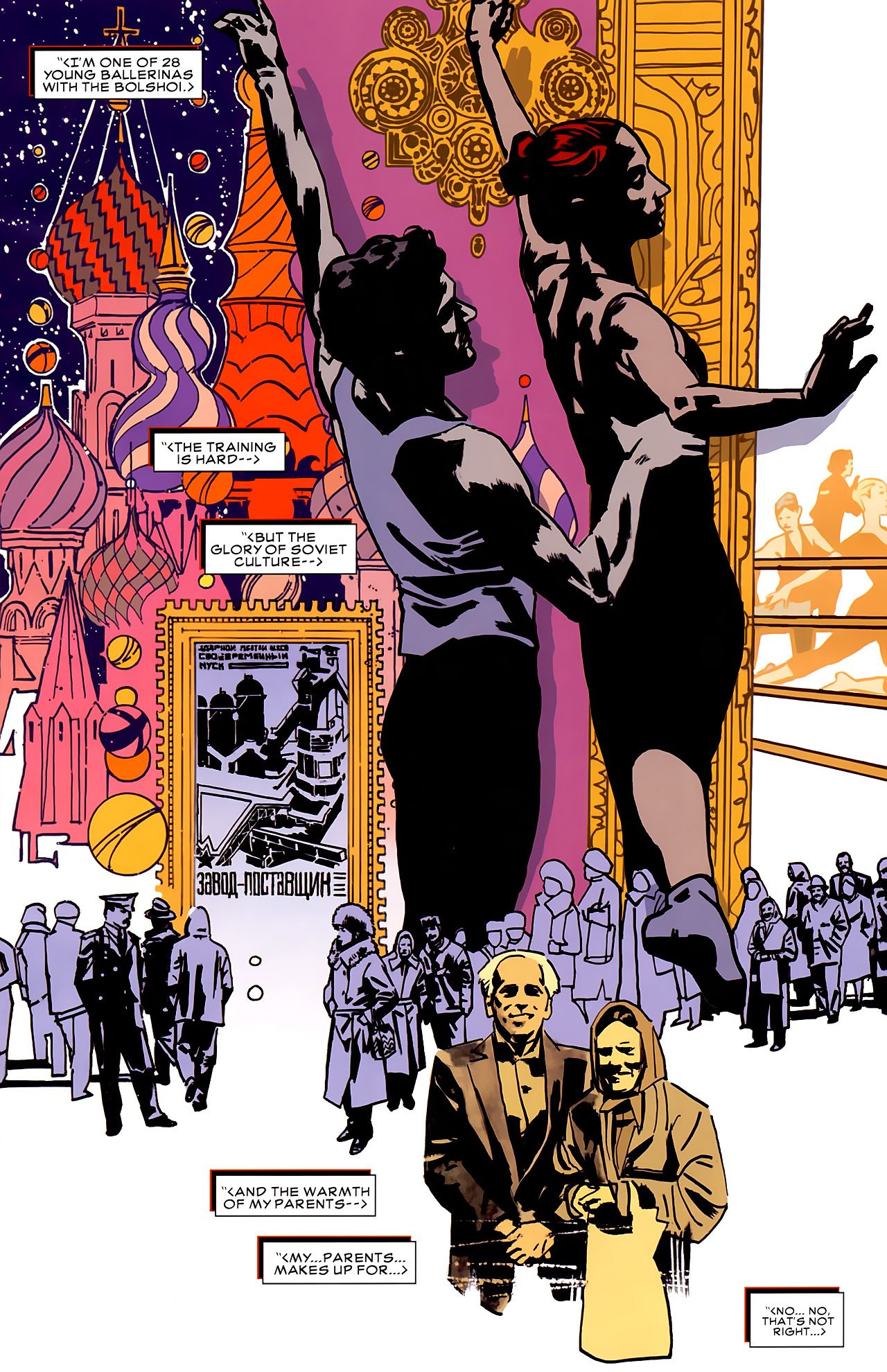Today, we look at the mystery of Natasha Romanova's parents and how they were somehow alive when she was an adult until they were, well, you know, not alive when she was an adult.
In Abandoned an' Forsaked, we examine comic book stories and ideas that were not only abandoned, but also had the stories/plots specifically "overturned" by a later writer (as if they were a legal precedent).
A number of readers wrote to me asking me to explain more about Black Widow's mother and I'll certainly admit that it is a very confusing situation. Honestly, though, it ties into a bit that I just recently wrote about the introduction of Kang into the Marvel Universe. You see, when the Marvel Age of Comics began in the early 1960s, there was a split between the superhero titles. On one hand, you had comics books where a comic book writer wrote a script (or a detailed enough plot) and an artist then drew it and then the writer would add the dialogue, and on the other hand, you had two of the greatest comic book plotters in comic book history, Jack Kirby and Steve Ditko, along with dialogue from the very popular word stylings of Stan Lee. The difference was glaring at the time. So Stan Lee came up with the idea that would allow him to at least dialogue pretty much all of the comics. He would have all of the OTHER Marvel artists plot their own comics, as well, and then Lee would do the dialogue, rather than pay other writers to do stories that didn't have the same "sound" as the books scripted by Lee.
This decision, though, effectively made it so that artists who had never written a comic book before were now basically comic book writers on TOP of their current job of drawing the comic book. A guy like Don Heck, in particular, was annoyed at having to now come up with a story instead of just drawing it. Stan Lee would help with plots a bit, but he had a lot of books on his plate. Jack Kirby would actually be a real sweetheart and help guys like Heck with plotting tips (and presumably some plotting ideas). And Heck plotted some excellent comic books during this era, including the introduction of Hawkeye in 1964's Tales of Suspense #57. However, he was not huge on continuity, so there were more likely to be conflicts in books by some of these other writers. In other words, Kirby would maintain a certain continuity in his titles, but the Heck/Lee team would not be quite as tight.
This was shown in Tales of Suspense #64 (by Don Heck, Stan Lee and Chic Stone) where Black Widow, who had previously manipulate the American marksman Hawkeye into becoming a Soviet operative before that failed a few times, and so the Soviets forced her to become an ACTIVE operative rather than just someone who sent other people on missions and they specifically gave her a bracelet style weapon that allowed her to shoot out a line (like a spider)....
Well, note how one of the things that they are using to pressure her is threatening her living parents, right? That was the only time that Natasha's parents ever appeared as characters in the comics.
By the 1970s, Marvel had a lot more writers and while some of them, like Roy Thomas and Steve Englehart, were extremely attuned to the continuity established in older comic book stories, others were less devoted to minor continuity points like Natasha's parents appearing in a single panel in a comic book and so in 1972's Daredevil #88 (by Gerry Conway, Gene Colan and Tom Palmer) Conway gave the Black Widow a brand-new origin (an early Avengers story by Roy Thomas SORT of gave her an origin) that specifically has her as an orphan as a child...
Now, normally I wouldn't really count this as an "abandoned an' forsaked" situation because it was really just that one panel, so instead I would consider that an "If I Pass This Way Again" deal, where an idea was introduced and no one ever picked up on it. In other words, Conway was clearly not trying to retcon the earlier story, he just had no idea that the earlier story was even a THING.
However, that brings us to Black Widow: Deadly Origin, the clever Paul Cornell-penned miniseries from 2009-10 (with art by Tom Raney, Scott Hanna and Matt Milla for the stories set in the present and art by the late, great John Paul Leon for the stories set in the past) served as a wonderfully complex attempt to reconcile all of Black Widow's various origin stories over the years, primarily the revelation in the earlier Richard K. Morgan Black Widow miniseries that Black Widow's memories had been tampered with.
Cornell takes it further and reveals that Widow was given multiple different memory implants at different points in her life and they had various impacts upon her path in life. The miniseries confirms the basics of the Conway origin...
Later, it shows that the conflicting memory implants showed her remembering her parents at one point and then forgetting them later on, all at different points in her life, confirming that her parents were memory implants.
Like I said, this was a very clever way of handling things. In the future, I'll detail exactly why Cornell had to take this specific route (basically why the Morgan miniseries was a bit too dramatic with its changes to Widow's continuity).
My buddy Tom A. wrote me about some of this stuff, I think what he wrote is a bit more applicable to the follow-up piece I'm going to do (showing how Cornell's miniseries really works best as abandoning Morgan's miniseries' revelations), but I do believe Tom mentioned Natasha's parents, as well, so thanks, Tom! And thanks to every other reader who asked for me to tackle the mystery of Black Widow's parents!
If anyone else has a suggestion for a future Abandoned an' Forsaked, drop me a line at brianc@cbr.com!


